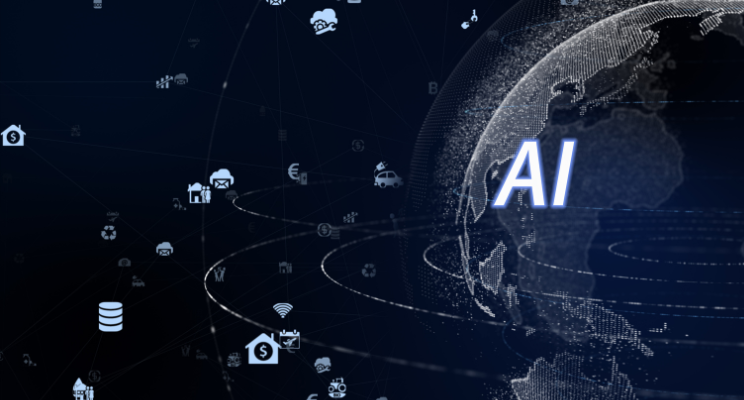Physical Address
304 North Cardinal St.
Dorchester Center, MA 02124
Physical Address
304 North Cardinal St.
Dorchester Center, MA 02124

Edge AI is revolutionizing IoT device capabilities by enabling real-time data processing, enhanced security, and reduced latency. Discover how industries like healthcare, manufacturing, and automotive are leveraging AI at the edge to build smarter, faster, and more autonomous systems.
Businesses’ and consumers’ interactions with devices have already been revolutionized by the Internet of Things (IoT). IoT devices are now smarter, faster, and more secure thanks to the integration of Edge AI. Edge AI is revolutionizing device capabilities and spurring innovations across industries by bringing data processing closer to the point of generation.
Instead of depending exclusively on cloud computing, edge AI refers to the implementation of artificial intelligence models on local devices, such as sensors, cameras, and smart appliances. As a result, there is less need to send data to centralized servers for analysis because it is processed locally. Wevolver’s 2025 Edge AI Technology Report claims that this method is revolutionary for sectors that depend on connected devices since it speeds up decision-making, improves data privacy, and maximizes bandwidth utilization.
The capacity of Edge AI to provide real-time data processing is among its most important benefits. Systems can respond immediately without waiting for cloud servers to respond by analyzing data on the device itself. This is particularly useful for applications such as health monitoring devices, smart factories, and driverless cars. Industrial IoT (IIoT) can process operational data locally thanks to Edge AI, which lowers downtime and increases system reliability, according to a recent article on Volt Active Data.
As worries about data security grow, local edge processing makes sure that private information doesn’t leave the device needlessly. This strategy improves privacy safeguards in industries like smart cities, healthcare, and finance. According to the Edge AI Technology Consortium, local data processing complies with stringent data regulations such as GDPR and HIPAA while lowering the risk of breaches and unauthorized access.
Edge AI minimizes the quantity of data transmitted to cloud platforms by handling the majority of the computations locally. This lowers bandwidth expenses, lessens network congestion, and extends the battery life of IoT devices. According to an extensive report by KaaIoT, Edge AI’s local processing power is transforming logistics management and connected cars while significantly lowering operating costs.
Edge AI analyzes machine data in real time to support predictive maintenance in manufacturing. Early fault or anomaly detection lowers maintenance costs and helps prevent unscheduled downtime. According to Pacific Data Integrators‘ experts, Edge AI plays a key role in enabling machine vision systems for quality inspections and enhancing production efficiency through real-time analytics.
Vital signs like blood pressure, oxygen saturation, and heart rate are now monitored by wearable health devices that incorporate Edge AI. Any abnormalities are instantly analyzed, and medical professionals are notified when action is required. This localized intelligence improves patient-centered care by offering timely insights without depending on constant cloud connectivity, according to a Telit article.
In order to make decisions instantly and process sensor and camera data on the vehicle itself for safe navigation, self-driving cars mainly rely on Edge AI. According to a summary from the Edge AI Vision Alliance, semiconductor companies and automakers are quickly implementing Edge AI to facilitate lane tracking, collision avoidance, and real-time perception.
Due to robust yet energy-efficient microcontrollers designed for AI applications, edge AI is becoming more and more popular. Businesses like STMicroelectronics are attempting to create circuits with AI capabilities that can perform intricate calculations on low-power devices. The industrial part of the Ojo-Yoshida Report discusses how these microcontrollers are overcoming the hardware constraints that edge devices have historically encountered.
Edge AI capabilities are being further accelerated by the emergence of 5G networks. 5G guarantees that edge devices can access cloud resources when necessary while still retaining quick local processing thanks to its low-latency, high-speed data transfer. The combination of Edge AI and 5G creates new opportunities in remote healthcare, industrial automation, and autonomous driving, as described in XenonStack’s guide.
Resource limitations, such as low processing power, memory, and storage, frequently affect how edge devices function. Lightweight, optimized algorithms are needed to run AI models effectively on such devices. In order to overcome this difficulty, an article from IoT Now highlights the value of hardware-software co-design and AI model compression techniques.
Edge AI makes edge devices more vulnerable to cyberattacks even though it improves privacy by keeping data local. Encryption, secure boot, and trusted execution environments are all essential components of on-device security. The security procedures required to deploy AI workloads at the edge safely without disclosing sensitive data are described in a Digital AI report.
The upcoming generation of IoT devices will become even more intelligent and self-sufficient as Edge AI chipsets, software frameworks, and 5G infrastructure advance. Future developments in smart cities, connected healthcare, and industrial automation are anticipated to heavily rely on edge AI. In addition to improving performance, Edge AI has the potential to enable mission-critical applications where reliability, security, and latency cannot be tolerated.
Edge AI is rapidly transforming the IoT ecosystem by delivering intelligence directly to devices. By lowering latency, improving data security, and reducing bandwidth consumption, it provides users and businesses with a faster, safer, and more efficient way to connect and interact with the outside world. Industries that embrace Edge AI now will be well-positioned to lead in a future marked by autonomous systems, real-time insights, and improved operations.